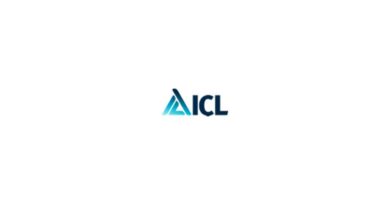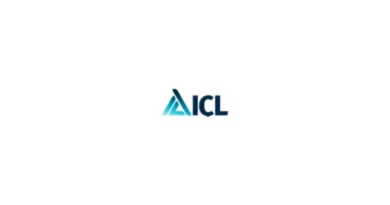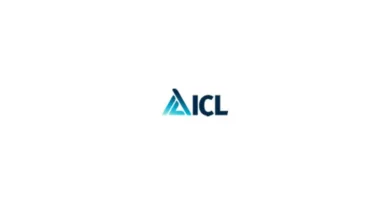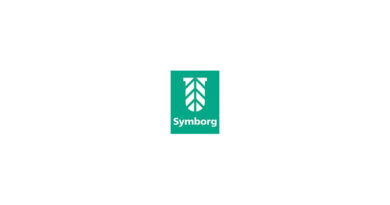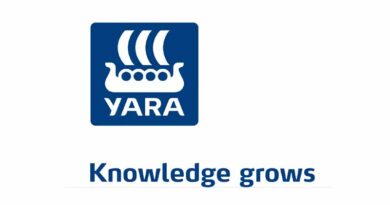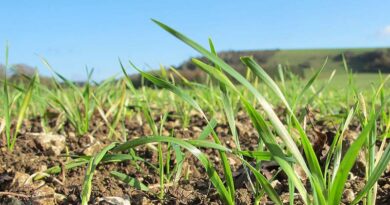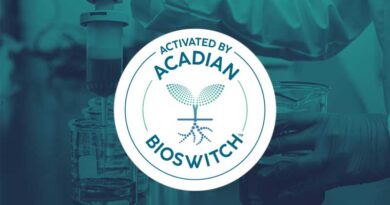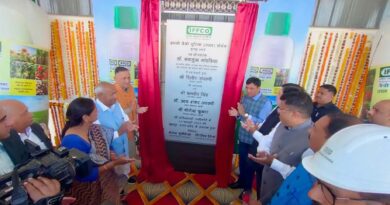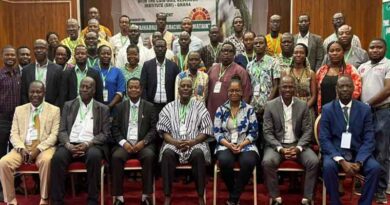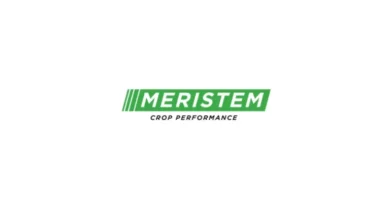The Basics of Coated Fertilizer Technology
22 May 2024, Israel: In an era where sustainable farming practices are more crucial than ever, growers and agronomists struggle with the dual objective of maximizing crop yields while minimizing environmental impact. Controlled-release fertilizers (CRFs) can play a key role in achieving this challenge, as they offer a more efficient and sustainable way to nourish crops.
Plants need nutrients to grow and complete their life cycle. While these nutrients may be initially present in the soil, they get depleted over time. Fertilizers play a key role in supplying or replenishing the nutrients needed for optimal plant growth. Responsible use of fertilizers not only leads to healthier crops and higher yields but also contributes to environmental conservation.
Nutrient management forms a cornerstone of sustainable and successful farming practices. It allows farmers to precisely identify the specific nutrients needed at the different growth stages. This strategy helps boost crop yields, health, and quality while also offering financial benefits by minimizing unnecessary nutrient applications, thereby reducing risks like nutrient leaching, runoff, or mineralization.
In this light, CRFs emerge as an essential tool in efficient nutrient management. Continue reading to learn about the basics of CRFs.
Why CRFs Matter in Modern Agriculture
Though the concept of nutrient management plans may sound fairly straightforward, their execution involves intricate considerations. For example, if a crop requires a certain level of nitrogen, merely applying it is not enough. It doesn’t guarantee its availability when the plants need it most. Plants, like all living organisms, assimilate nutrients progressively over time, not all at once.
Therefore, judicious use of fertilizers is vital for farmers to sustain their crops, increase productivity, and limit environmental impact. However, the nutrients from fertilizers can be lost in several ways. For example, nitrogen, a water-soluble nutrient, might leach away. Other nutrients could bind to soil particles and be carried off by erosion. These losses represent not just a financial setback for farmers but also pose environmental risks.
To tackle these challenges, farmers are adapting their fertilizer application timings to align more closely with crop requirements and needs. This might involve split applications throughout the season. Techniques like fertigation are applicable in some cases, though not suitable for all crop systems. While these methods can reduce nutrient loss, they demand more time, resources, careful scheduling, and the risk of nutrient loss still persists.
CRFs offer a sustainable solution to the challenges of nutrient loss in agriculture. These fertilizers are designed to release nutrients in a controlled manner, directly targeting the different growth phases of plants.
https://fb.watch/p5RjfV0q-W/
What are controlled-release fertilizers?
Controlled-release fertilizers are fertilizers with a semi-permeable fertilizer coating material that slowly release nutrients into the rooting zone. Nutrients slowly become available to plants as they continue to grow. This is more appropriate given plants’ nutrient needs throughout their growing period.
The amount of nutrients distributed is affected by soil temperature, as is the growth rate of plants. This means with increasing soil temperature, plant growth increases along with the amount of nutrients from these controlled-release fertilizers.
CRFs are different from slow-release fertilizers (SLFs) because SLFs are influenced by temperature, water, soil pH, and microbial activity, as compared to CRFs whose nutrient release is influenced primarily by temperature.
These polymer-coated fertilizers increase the efficiency of nutrient management and nutrient release. CRFs can eliminate the need for multiple split applications throughout the season. Rather than side-dressing multiple times, growers can make a single application that lasts all season long.
The History of Controlled-Release Fertilizers
In 1842, after extensive experiments with manures on potted plants and field crops at his estate, Sir John Bennet Lawes made a groundbreaking contribution to agriculture. He patented a process for converting phosphate rock into superphosphate using sulfuric acid, marking the birth of the artificial fertilizer industry. That same year, he inaugurated the world’s first fertilizer factory.
This innovation laid the groundwork for a significant shift in 1967 when Osmocote®, the first Controlled Release Fertilizer (CRF), revolutionized the fertilizer market. Unlike traditional fertilizers, Osmocote® provided a gradual release of nutrients over time, offering a more sustainable and efficient approach to plant nutrition. Over the past five decades, Osmocote® has grown into a globally renowned leader in plant nutrition solutions, earning the trust of growers worldwide.
By 2023, the controlled-release fertilizer market had expanded significantly, reaching a valuation of US 2.2 Billion. This growth reflects the profound impact these innovations have had on global food production, enabling higher crop yields and more efficient land use.
Fertilizer Coating Technology
At ICL, we are deeply committed to innovation and sustainability, and this is reflected in our focused R&D team’s work on Controlled-Release Fertilizers (CRFs). Our team is setting industry benchmarks, constantly striving to develop products that not only boost the efficiency of growers in the field but also safeguard the surrounding environmental systems.
Different formulations of polymer or resin coatings can be used for controlled-release fertilizers. These formulations will determine the release rate and how the fertilizer will interact in the cropping system. With this versatility, growers can tailor their nutrient management strategies to suit their crop type and nutritional needs.
The semi-permeable E-Max coating, responsive to temperature and moisture, allows nutrients to dissolve gradually and be released through microscopic pores.
This technology represents a significant step forward. It not only reduces the frequency and rates of fertilizer application but also boosts nutrient use efficiency. It’s a solution that benefits growers and the environment alike, showcasing our resolve to advance sustainable agriculture
E-Max Technology in Action: Agrocote, Agromaster, and Agroblen
This innovative technology is used across a broad portfolio of nutritional products to meet the needs of growers around the world. Brand lines such as Agrocote, Agromaster, and the most recent, Agroblen all are formulated with a unique fertilizer coating material.
Agrocote was created for single nutrient applications in various row crops. This unique line helps growers adjust their nutrient management plans to meet any specific deficiencies that may occur in their fields. With polymer-coated fertilizers, nutrient loss through leaching, volatilization, denitrification, and P-fixation are all extremely limited.
The Agromaster line was developed for a single application at the time of planting. This line has a blend of coated and non-coated nutrients, supporting both the immediate and future nutritional needs of the crop. This line helps reduce nutrient applications in the field, saving growers money in both labor and diesel costs.
Agroblen is formulated for use in planting holes for permanent crop development such as plantations or orchards. This line is one of the safest nutritional products for young root systems. It was developed to help meet the demands of developing permanent crops to achieve optimum growth during key development stages.
The E-Max Release Technology is flexible, with the fertilizer coating material working well in many different environments. The duration of the release can be matched based on crop needs by selecting the right product from ICL’s portfolio.
The development and application of CRFs continue to evolve to meet the dual needs of efficiency and environmental sustainability. Building on this progress, ICL has taken a significant leap forward with the introduction of eqo.x – first-of-its-kind CRF technology that embodies these principles to an even greater extent.
ICL’s State-Of-The-Art CRF with Biodegradable Coating: eqo.x
ICL has marked a significant milestone in sustainable agriculture with the introduction of eqo.x, a pioneering controlled-release fertilizer (CRF) technology launched on September 15 last year. This first-of-its-kind biodegradable coating for CRFs, specifically designed for open-field agriculture, represents a major leap in reducing environmental impact. It boasts an impressive nutrient use efficiency (NUE) increase of up to 80%, greatly minimizing nutrient loss.
Notably, eqo.x aligns with the impending European fertilizer standards set for 2026 and supports the EU’s Farm to Fork and Soil Strategy for 2030 goals by promising to halve nutrient loss by 2030. Applied to ICL’s Agromaster and Agrocote brands, this innovative technology not only enhances crop yield and reduces nitrogen applications but also safeguards soil and groundwater quality.
At ICL we are dedicated to advancing sustainability through innovation. Our innovative fertilizer coating technology truly sets our coated fertilizers apart, offering a cost-effective solution that puts sustainability at its core. This pioneering biodegradable fertilizer coating effectively underscores our resolve to provide products that are not only efficient and beneficial for growers but also gentle on our planet
Monitoring and Assessing Nutrient Release
Effective nutrient management is pivotal for optimal plant growth, and understanding how to monitor and assess nutrient release is key. The following steps outline a general approach to ensure efficient and effective nutrient management:
- Determining Nutrient Needs: Each crop has distinct nutrient requirements at various growth stages. Inadequate nutrients can stunt growth and reduce yields. We focus on ensuring consistent nutrient levels throughout all growth phases with controlled-release fertilizers.
- Understanding Nutrient Removal Rates: This is crucial for developing a nutrient management plan. Rates vary based on yield and field conditions. We start here to tailor our approach to each specific farming scenario.
- Soil and Water Testing: It’s essential to test soil for available nutrients and, where applicable, irrigation water. This helps us understand what’s already there and what’s needed.
- In-season Analysis: Using leaf and sap analysis during the growth season provides real-time insights. This helps in identifying any nutrient deficiencies or excesses promptly.
- Leveraging Technology: Precision nutrient management is increasingly technology-driven. Tools like NDVI, NDRE, and Red Edge sensors are invaluable. They detect early signs of crop stress, aiding in effective nutrient, water, and pest management.
- Using Planning and Management Tools: Emerging tools assist with the timing of fertilizer and crop protection applications. They ensure that interventions are as efficient and timely as possible.
ICL’s CRF Timer
ICL has developed the CRF Timer, a state-of-the-art solution to assist with the timing of fertilizer and crop protection applications. The CRF Timer integrates data from over 400 weather stations across 48 countries and 7 regions.
This app allows growers to track nutrient release from ICL’s CRF, tailored to local weather conditions. It not only provides real-time monitoring but also aids in selecting the appropriate ICL product for specific environmental and crop requirements. The CRF Timer is designed only for ICL’s CRFs coated by E-Max Release Technology.
With the CRF Timer, growers can select their product, and day of application, and see nutrient release based on the closest weather station. This gives them an indication as to how much has been released and how much is left to be released.
The CRF Timer not only assists in-season but can also be used as a planning tool to determine what ICL product is best for local conditions and crop needs. This helps growers select the best tool for their environment.
Controlled-Release Fertilizer Technology for a Sustainable World
Nutrient management plays a key role in sustainable farming. Nutrient displacement can lead to negative environmental impacts. This is why technology like controlled-release fertilizers plays an important role in the future of agriculture.
With one application, growers can expect a predictable release of fertilizer, saving on labor and fuel costs. Growers will experience a more uniform crop and higher yields due to increased nutrient use efficiency. This advanced fertilizer coating technology will have a transformative role in the plant nutrition space.
With the growing population, growers must do more with less. Controlled-release fertilizers are a perfect example of how they can achieve this goal. Using emerging research, the a need to focus heavily on sustainable practices that preserve our resources and environment. This biodegradable fertilizer coating leaves no trace in the soil after the nutrients are completely released.
As we continue to innovate and lead in the field of fertilizer technology, ICL’s unwavering commitment to sustainable agricultural practices not only reflects our dedication to the present needs but also our responsibility towards future generations, ensuring a healthier and more sustainable world for all.
Follow ICL Group to continue to learn more about innovative technologies that support a stronger, healthier future.
(For Latest Agriculture News & Updates, follow Krishak Jagat on Google News)


